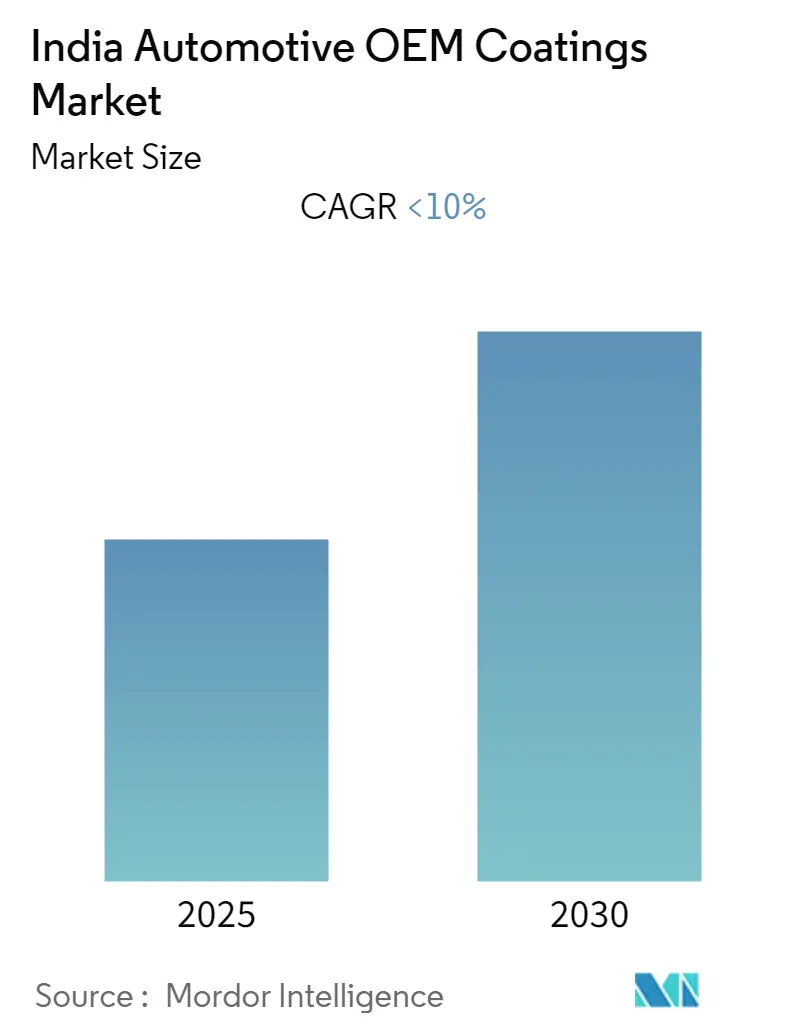
| Study Period | 2019 - 2030 |
| Base Year For Estimation | 2024 |
| Forecast Data Period | 2025 - 2030 |
| Historical Data Period | 2019 - 2023 |
| CAGR | 10.00 % |
| Market Concentration | Medium |
Major Players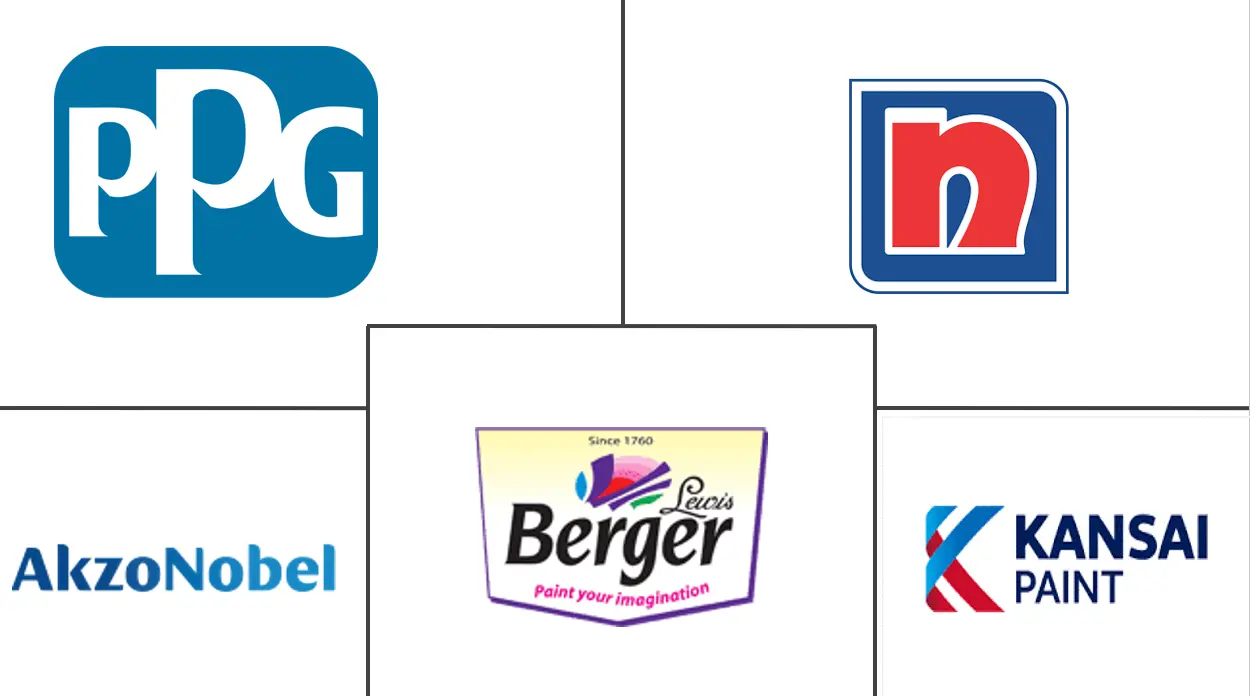
*Disclaimer: Major Players sorted in no particular order |
India Automotive OEM Coatings Market Analysis
The India Automotive OEM Coatings Market is expected to register a CAGR of less than 10% during the forecast period.
- The Increasing Demand for Passenger Cars is anticipated to be one of the major factors driving the growth of the Automotive OEM coatings market.
- On the flip side, shortages of semiconductors and other components are likely to negatively affect the demand for Auto OEM coatings consumption in the country.
- The Market expansion is anticipated to be supported by Increasing Demand for Electronic Vehicles.
- In the End-User segment, the Passenger Cars segment is expected to dominate the country's automotive OEM coatings market.
India Automotive OEM Coatings Market Trends
Passenger Vehicles Dominate the Market
- Automotive OEM coatings are generally used in cars and other automobiles for protection and adornment.
- In India, The Automotive industry is one of the largest manufacturing sectors in the country and contributes about 7.5% to the nation's GDP. In 2021, India became the third-largest automobile market and the fifth-largest light commercial vehicle manufacturer.
- The Increasing Demand for passenger cars in the automotive OEM Coating is expected to increase due to the gradual shift of consumers from convenient transportation to a luxurious and safe ride.
- The Automotive OEM coatings for passenger cars are estimated to have an upside demand in the forecast period. For instance, due to COVID-19, passenger car production in 2020 declined by 22% compared to 2019. However post, COVID-19, due to the recovery of the passenger car market, the production of passenger cars in the country reached 3.63 million units in 2021, which shows a recovery of 28% compared to 2020.
- Furthermore, Increased investments and advancements in the automobile industry in India are expected to increase the consumption of Automotive OEM coatings.
- For Example, In April 2022, Tata Motors announced plans to invest USD 3.08 billion in its passenger vehicle business over the next five years. This is expected to positively impact the production of Auto OEM coatings in the country.
- All the factors above are expected to act as driving factors for the Automotive OEM coatings market during the forecast period.
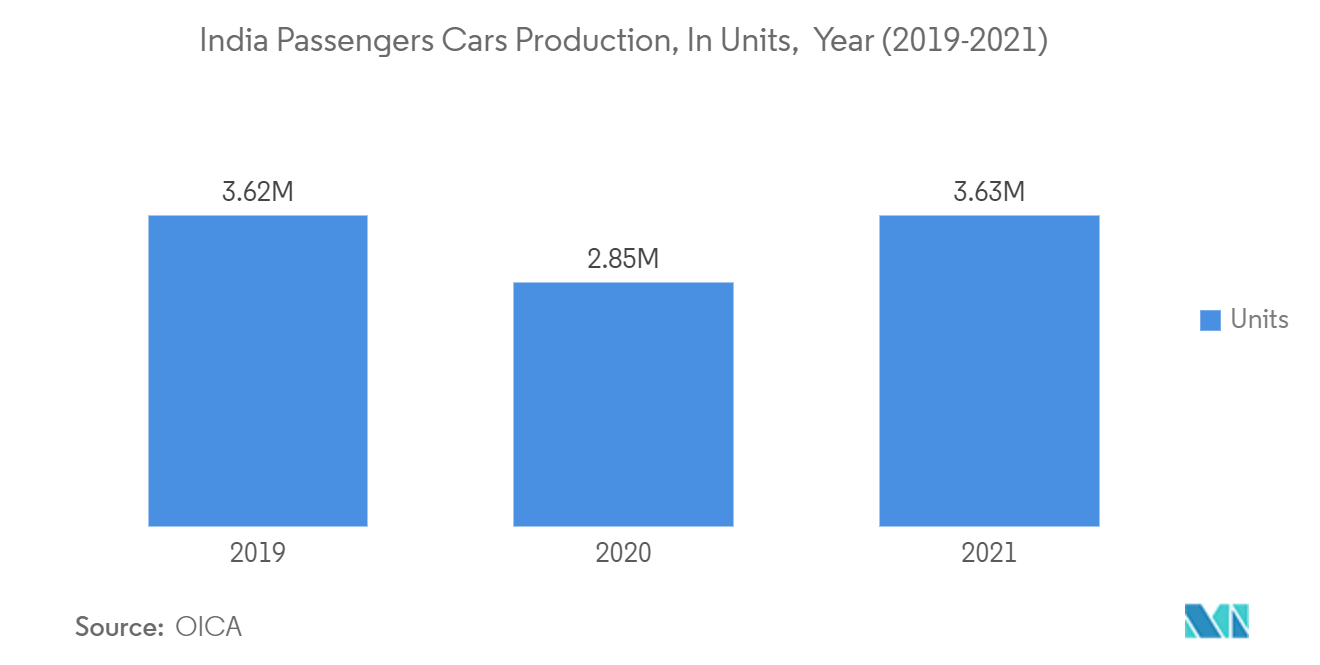
Water-borne Coating Dominate the Market
- Although solvent-borne technology accounts for most of the market, it is predicted to grow slowly over the forecast period.
- Regulations governing VOC emissions from hazardous air pollutants contained in solvent-borne automotive OEM coatings such as toluene, xylene, ethylbenzene, and methyl ethyl ketone are one of the major factors limiting the expansion of solvent-borne automotive OEM coatings.
- Water-based automotive OEM coatings are becoming increasingly popular due to the continuously changing environmental regulations. Water-based coatings are constantly developing to provide the same performance as solvent-based coatings. For example, mild co-solvent reducers and additives are being developed to improve water-based coatings' performance and drying times.
- The increasing adoption of waterborne automotive coatings is due to their physical and chemical qualities, such as high chemical resistance, low processing temperature, and solvent-free formulations.
- Owing to above mentioned factor, waterborne technology is expected to grow significantly during the forecast period.
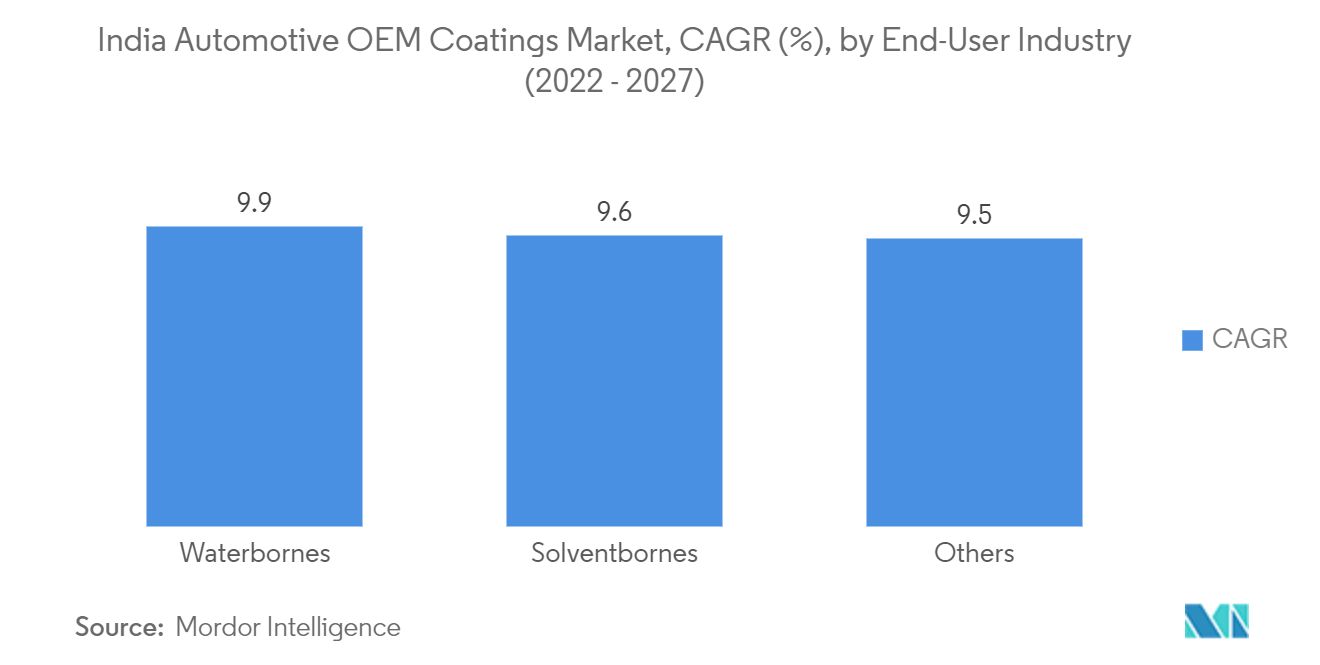
India Automotive OEM Coatings Industry Overview
The India Automotive OEM Coatings Market is consolidated, as most of the market share is divided among a few companies. Some of the key players in the market include (not in any particular order) Akzo Nobel N.V., PPG Asian Paints, Berger Paints India Limited, Kansai Nerolac Paints Limited, and Nippon Paint (India) Company Limited.
India Automotive OEM Coatings Market Leaders
-
Nippon Paint Holdings Co., Ltd
-
Kansai Paint CO. Ltd
-
Akzo Nobel N.V.
-
PPG Asian Paints
-
Berger Paints India Limited
- *Disclaimer: Major Players sorted in no particular order
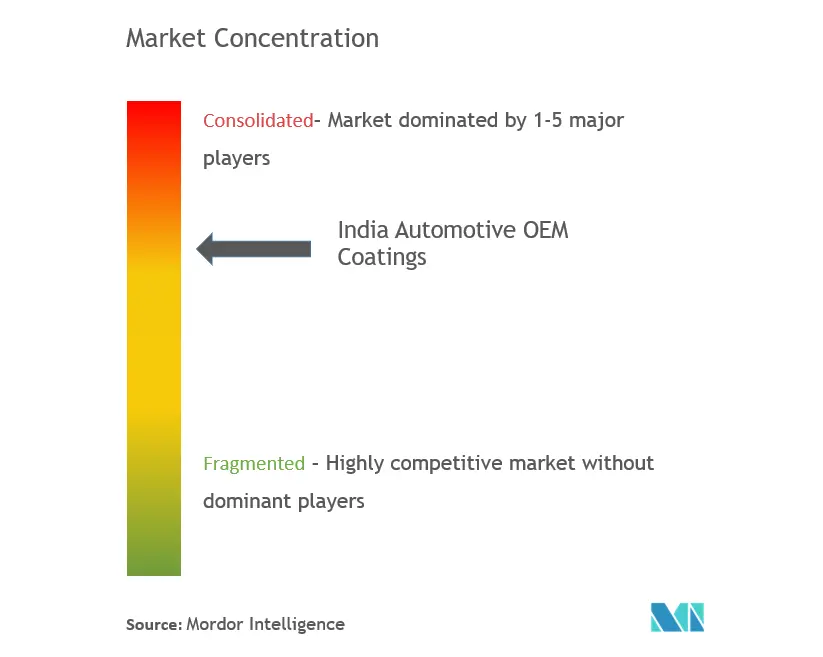
India Automotive OEM Coatings Market News
- In May 2022, BASF recently announced the expansion of its Automotive Coatings Application Center in Mangalore (India) in order to improve customer service and develop innovative solutions.
India Automotive OEM Coatings Industry Segmentation
Automotive OEM coatings are used to manufacture automotive vehicles' body parts. The market is segmented by Resin Type, Technology, and End-User Industry. By Resin, the market is segmented into acrylic, alkyd, polyurethane, epoxy, polyester, and other resins. Technology segments the market into water-borne, solvent-borne, and other coating technologies. End-User Industry segments the market into Passenger Cars, Commercial Vehicles, and ACE. For each segment, the market sizing and forecasts have been done based on revenue (USD million)
| Resin Type | Epoxy |
| Acrylic | |
| Alkyd | |
| Polyurethane | |
| Polyester | |
| Other Resin Type | |
| Technology | Water-borne |
| Solvent-borne | |
| Others | |
| End-user Industry | Passenger Cars |
| Commercial Vehicles | |
| ACE |
India Automotive OEM Coatings Market Research FAQs
What is the current India Automotive OEM Coatings Market size?
The India Automotive OEM Coatings Market is projected to register a CAGR of less than 10% during the forecast period (2025-2030)
Who are the key players in India Automotive OEM Coatings Market?
Nippon Paint Holdings Co., Ltd, Kansai Paint CO. Ltd, Akzo Nobel N.V., PPG Asian Paints and Berger Paints India Limited are the major companies operating in the India Automotive OEM Coatings Market.
What years does this India Automotive OEM Coatings Market cover?
The report covers the India Automotive OEM Coatings Market historical market size for years: 2019, 2020, 2021, 2022, 2023 and 2024. The report also forecasts the India Automotive OEM Coatings Market size for years: 2025, 2026, 2027, 2028, 2029 and 2030.
Our Best Selling Reports
India Automotive OEM Coatings Industry Report
Statistics for the 2025 India Automotive OEM Coatings market share, size and revenue growth rate, created by Mordor Intelligence™ Industry Reports. India Automotive OEM Coatings analysis includes a market forecast outlook for 2025 to 2030 and historical overview. Get a sample of this industry analysis as a free report PDF download.




